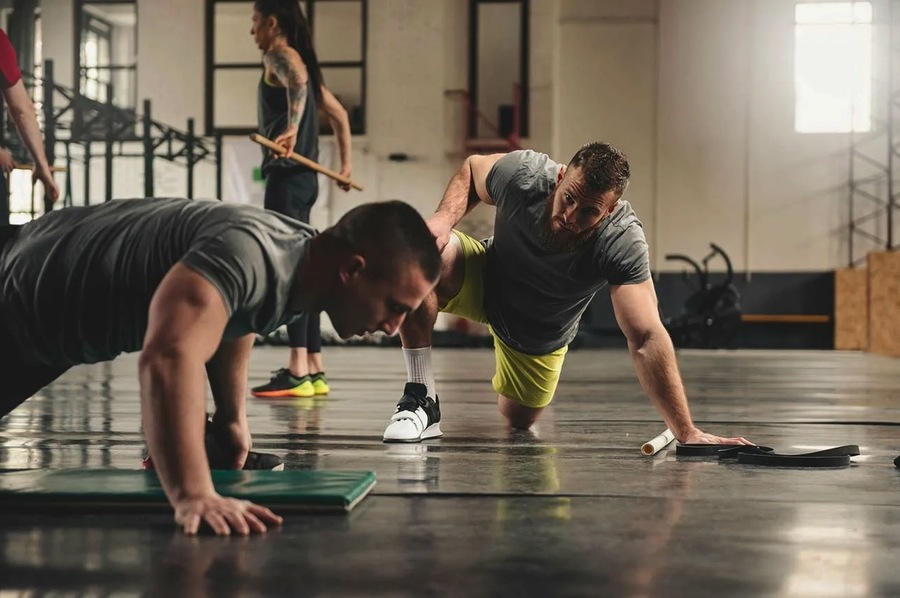The Benefits of Functional Exercises
Functional exercises, also known as therapeutic exercises, are movements designed to train and develop muscles to perform everyday activities safely and efficiently. Unlike traditional strength training, which often focuses on isolated muscle groups, functional training emphasizes integrated, multi-joint movements that enhance overall strength, balance, and coordination. These exercises mimic real-life activities, improving the body’s ability to handle daily tasks and physical demands. For instance, lifting, bending, pushing, and pulling are all movements that functional training aims to make easier and safer. By incorporating functional exercises into a fitness routine, individuals can improve their overall fitness and reduce the risk of injury both in everyday life and in sports. If you’re looking for a poly clinic Dubai that offers specialized guidance in functional training, you’ll find many professionals ready to help you master the technique and avoid injuries.
The History of Recreational Gymnastics
The concept of physical exercise for health and well-being dates back to ancient times. One of the earliest advocates was Hippocrates, who, in his treatise “On Healthy Lifestyle,” extolled the virtues of physical activity for maintaining good health and preventing disease. Hippocrates believed that exercise was essential for the balance of bodily fluids and overall health, a view that laid the groundwork for the development of therapeutic exercise as a crucial aspect of healthcare.
In the Renaissance period, Hieronymus Mercurialis, an Italian physician, wrote “De Arte Gymnastica” (“The Art of Gymnastics”) in 1569. This comprehensive book detailed the benefits of various physical exercises and their therapeutic applications, marking a significant milestone in the history of recreational gymnastics. Mercurialis revived ancient Greek and Roman practices and combined them with contemporary medical knowledge, emphasizing the role of physical activity in preventing and treating diseases.
The 18th century saw further advancements with the contributions of French physician Clement Tissot, who emphasized the importance of physical activity in rehabilitation and health maintenance. Tissot’s work, “Gymnastique Médicinale et Chirurgicale,” highlighted the therapeutic benefits of exercise in the recovery from surgery and illness, influencing the development of modern physical therapy.
In the 19th century, German physician D. Schreber published a pamphlet titled “Room Health Gymnastics,” promoting exercises that could be performed indoors to improve health and prevent disease. Schreber’s ideas resonated widely, and his pamphlet became a popular guide for home-based physical fitness. His work laid the foundation for the development of structured exercise programs aimed at enhancing health and preventing illness.
Today, functional exercises have evolved into a sophisticated and scientifically-backed approach to fitness, incorporating principles from various disciplines, including physical therapy, sports science, and kinesiology. Modern functional training programs are designed to improve overall fitness, enhance athletic performance, and reduce the risk of injury by focusing on movements that are essential for daily life and sports.

What is Functional Training?
Functional training focuses on exercises that replicate movements used in everyday life and sports. This type of training enhances the coordination, strength, and stability required for performing daily activities and athletic tasks. Functional training typically involves compound movements that engage multiple muscle groups simultaneously, promoting better overall fitness and reducing the risk of injury.
Functional training is based on the principle of training movements rather than muscles. This approach ensures that the body works as a cohesive unit, improving the efficiency and effectiveness of movements. By targeting the muscles and joints used in everyday activities, functional training helps individuals perform these tasks with greater ease and less risk of injury. This holistic approach to fitness emphasizes the importance of movement patterns and functional strength, which are essential for maintaining health and preventing injuries.
Exercises Included in Functional Training
Functional training includes a variety of exercises designed to improve the body’s ability to perform real-world tasks. Some of the key exercises are:
Squats: This fundamental exercise targets the legs, glutes, and core. Squats mimic the motion of sitting and standing, improving lower body strength and stability. By strengthening the muscles used in these movements, squats enhance functional strength and make everyday activities, such as sitting and standing, easier and safer.
Lunges: Lunges work the legs and glutes while enhancing balance and coordination. They mimic walking or stepping movements, making them highly functional. Lunges also improve hip stability and flexibility, which are essential for maintaining balance and preventing falls.
Push-ups: This upper body exercise strengthens the chest, shoulders, triceps, and core. Push-ups simulate pushing movements used in everyday activities, such as pushing open a door or moving heavy objects. By enhancing upper body strength and stability, push-ups improve functional strength and reduce the risk of injury.
Deadlifts: Deadlifts target the lower back, glutes, and hamstrings. They mimic the motion of lifting objects from the ground, improving overall strength and stability. By strengthening the muscles used in these movements, deadlifts enhance functional strength and make lifting tasks easier and safer.
Planks: Planks are excellent for core strength, engaging the abdominal muscles, back, and shoulders. A strong core is essential for maintaining proper posture and balance. Planks improve core stability and strength, which are essential for maintaining good posture and preventing back pain.
Kettlebell Swings: This dynamic exercise works the entire body, particularly the hips, glutes, and core. Kettlebell swings improve power, endurance, and cardiovascular fitness. By enhancing overall strength and endurance, kettlebell swings improve functional strength and make everyday activities easier and safer.
Medicine Ball Throws: These exercises enhance upper body strength, power, and coordination. They replicate throwing motions used in various sports and daily activities. By improving upper body strength and coordination, medicine ball throws enhance functional strength and make throwing tasks easier and safer.

Benefits of Functional Training
Functional training offers numerous benefits for individuals of all fitness levels:
Improved Strength: Functional exercises build overall body strength, enabling individuals to perform everyday tasks with greater ease and efficiency. By enhancing overall strength, functional training improves the ability to perform daily activities and reduces the risk of injury.
Enhanced Coordination and Balance: By engaging multiple muscle groups and promoting joint stability, functional training improves coordination and balance, reducing the risk of falls and injuries. Enhanced coordination and balance are essential for maintaining good posture and preventing injuries.
Increased Flexibility: Many functional exercises involve a full range of motion, enhancing joint flexibility and mobility. Improved flexibility and mobility are essential for maintaining good posture and preventing injuries.
Better Posture: Strengthening the core and back muscles helps maintain proper posture, reducing the risk of back pain and improving overall body alignment. By enhancing overall strength and stability, functional training improves posture and reduces the risk of back pain.
Injury Prevention: Functional training strengthens muscles and joints, making the body more resilient to injuries caused by physical activities and daily tasks. By enhancing overall strength and stability, functional training reduces the risk of injuries.
Boosted Metabolism: Compound movements in functional training elevate heart rate and burn more calories, aiding in weight management and metabolic health. By enhancing overall strength and endurance, functional training improves metabolic health and aids in weight management.
Enhanced Athletic Performance: Functional training improves agility, speed, and power, benefiting athletes and individuals engaged in various sports. By enhancing overall strength and endurance, functional training improves athletic performance and reduces the risk of injury.
Conclusion
Functional exercises provide a comprehensive approach to fitness, enhancing strength, balance, and coordination for everyday activities and sports. The history of recreational gymnastics highlights the longstanding recognition of physical exercise’s health benefits, from Hippocrates to modern-day fitness practices. If you aim to improve your fitness through functional training, seek guidance from specialists who can tailor exercises to your needs, ensure proper technique, and help you avoid injuries. Whether you are looking to correct your figure, become stronger, or enhance your overall fitness, functional training offers a holistic and effective approach to achieving your fitness goals. If you’re looking for a poly clinic Dubai that offers specialized guidance in functional training, you’ll find many professionals ready to help you master the technique and avoid injuries.

Biker, foodie, guitarist, Swiss design-head and New School grad. Operating at the sweet spot between simplicity and mathematics to create strong, lasting and remarkable design. I prefer clear logic to decoration.
